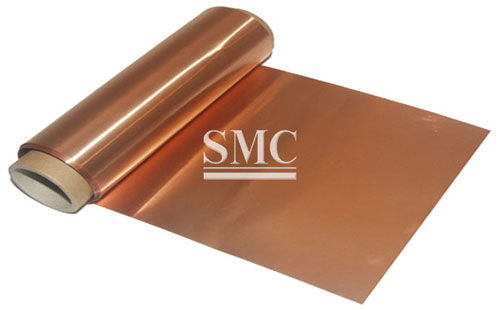Notice: Undefined index: sith_hide_share in /www/sites/alloy.wiki/index/wp-content/themes/likegoogle/single.php on line 32
Deprecated: get_settings is deprecated since version 2.1.0! Use get_option() instead. in /www/sites/alloy.wiki/index/wp-includes/functions.php on line 4862
Rolling is the basic method for the production of copper and copper alloy sheets and strips. Rolling is a process in which the product is rolled out between the two rolls that have a certain pressure on each other and the rotation directions are opposite. Rolling deformation process.
According to the different methods of supplying billets, the production of copper alloy strips can be divided into four types: ingot rolling method, ingot forging rolling method, continuous casting strip rolling method, and extruded billet rolling method.
(1) Ingot rolling method, usually hot rolling, first casts copper and copper alloys into larger ingots and heats them to a certain temperature (that is, higher than the recrystallization temperature of the alloy material, generally (Equivalent to 0.8 ~ 0.9 of alloy melting point), hot rolled into slab or strip. This is the traditional method of making blanks for copper plate and strip, and it is still widely used. It has large production capacity and high efficiency, and is suitable for multiple varieties and large-scale production.
(2) Extrusion rolling method mainly refers to a method of continuously extruding a continuous casting rod into a strip by using an up-draw continuous casting rod. This method has shown clear advantages in copper bar production. At present, some manufacturers have completed the test of producing 300mm wideband billets. The reason why people are interested in this method is mainly because the investment of this method is much lower than that of the ingot hot rolling method.

(3) The ingot forging and rolling method is only used in a few special cases, such as high-strength and high-conductivity copper alloy slabs. The ingot is improved in plasticity after hot forging; the cross-sectional area can also be enlarged by upsetting to create conditions for cold deformation processing rate; the directionality of the structure of the processed material can be improved by changing the forging direction, and so on.
The production process of copper alloy plate and strip foil is mainly composed of hot rolling, milling, cold rolling, heat treatment, surface cleaning, stretch bending, and shearing. In addition to the pressure processing method, the production of box materials can also be obtained by electrolytic methods.
Guest contributors are welcome at the Alloy Wiki.It is a weekly wiki and guide on alloy information and processing technology, while also about the vast array of opportunities that are present in manufacturing. Our team of writers consists of a Machining Material Supplier / Machinist / Tool and Die Maker, a Biomedical Engineer / Product Development Engineer, a Job Development Coordinator / Adjunct Professor, and a President and CEO of a manufacturing facility.
Link to this article:Processing Method of Copper and Copper Alloy Plate and Foil
Reprint Statement: If there are no special instructions, all articles on this site are original. Please indicate the source for reprinting:Alloy Wiki,thanks!^^


